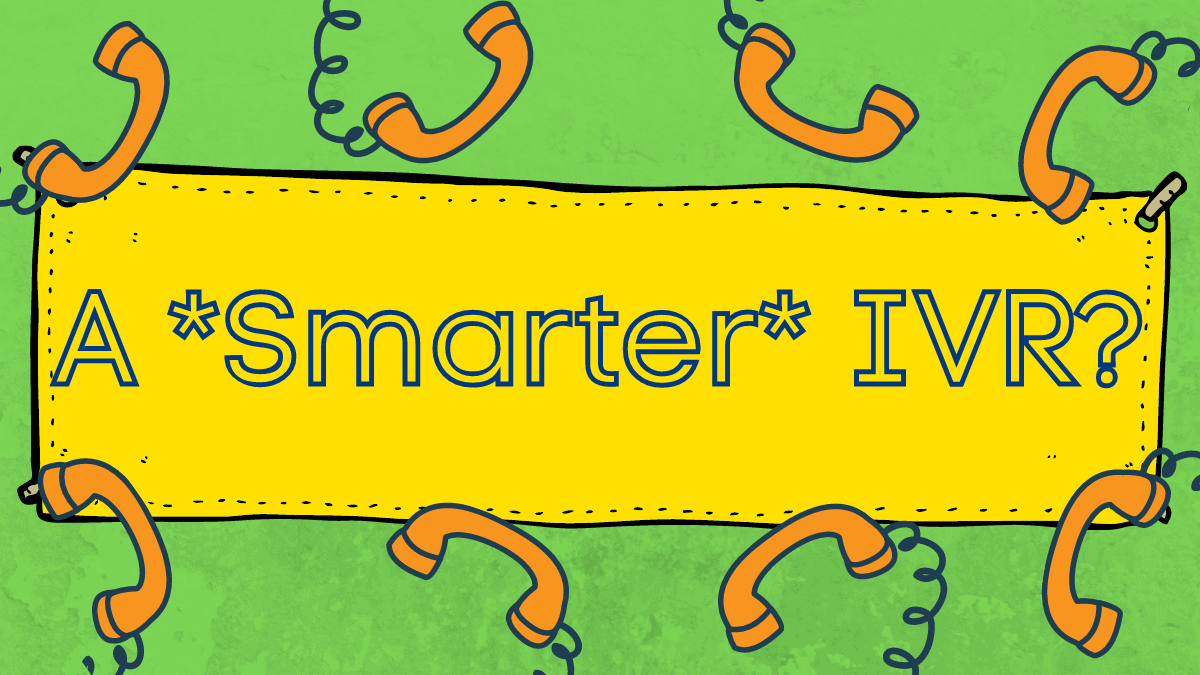In this post:
- Why are IVR solutions idiots?
- How do IVRs create problems?
- What’s the *solution* for IVR solutions?
- What are the benefits of integration?
Erm… why are IVR solutions idiots?
Ok, here’s what I mean.
When a caller reaches an inbound call center, the IVR is the first system that they’re going to interact with.
But the IVR is unlikely to know anything about them.
Ideally it should know things like:
- Has this person made contact recently, in any channel?
- Do they have an open ticket in our cloud Helpdesk software?
- Can we route them based on their CRM profile?
- Is this a high priority caller?
It’s all pretty simple, right? We’re not saying the IVR should be psychic – just that it should use the basic information that you already have on file!
But let’s face it; if your IVR was an agent, you’d fire it!
So: IVR solutions are idiots because they don’t use your data in a meaningful way!
How do IVRs create problems?
IVR solutions don’t use caller context. And there are two reasons why that’s a big problem.
#1 – You’re not providing the best possible service
No model of great service involves making customers repeat themselves. It’s as simple as that!
If a customer has already called, emailed or sent a messenger pigeon, your IVR should know about it.
In fact, let’s reframe that: your organization should use the information it has. That means every part of your organization!
From a customer perspective, your agents, your website, your social media feeds – and yes, your IVR – are all part of the same thing.
No part of that service can be shoddy.
But this isn’t only about customers repeating themselves. Other use cases for context-driven IVRs include:
- Providing automated updates on existing cases
- Routing based on customer profile
- Delivering callers to agents with their complete case history
And let’s not forget the big one; actual self-service.
With modern, context aware solutions and conversational IVR it’s easy to increase call containment. That vital ingredient – context – is how you can help more customers resolve issues without ever needing an agent at all.
(Are you focused on the quality of your service? Read ‘5 Customer satisfaction metrics for getting inside their heads.’)
#2 – Data has value… so don’t waste it!
Ok, this is a bit more abstract, but stay with me.
Gartner predicts that by 2022, 90% of corporate strategies will explicitly mention data as a critical enterprise asset.
Here’s another Gartner stat you’ve probably heard: 81% of businesses now compete on customer experience.
And that’s great. But what does it really mean?
It means that businesses compete on their ability to turn customer data into specific actions.
Having data that you don’t use is like having company cars that nobody drives. Basically pointless.
Because data is extremely valuable – but only if you turn it into action!
So what’s the *solution* for IVR solutions?
Clearly, businesses need to get data from databases to the IVR.
And that’s pretty straightforward.
Well, sort of.
Our approach is API integration. What is API integration? Time for a nifty metaphor!
‘API’ stands for Application Programming Interface. It’s purpose is pretty simple – it’s a kind of messenger+universal translator for different pieces of software.
Your IVR might not speak the same language as your call center CRM – and even if it did, there’s no line of communication between them.
That’s where the API comes in. It sits in between the CRM and the IVR and carries data from one to the other.
Crucially, it makes sure that that data is presented in a way that both can understand.
(Need to know more? Read ‘What is an API? And how do they enhance contact center services?’)

What are the benefits of integrating?
The list of benefits is pretty huge. In fact, the use cases for a strong integration strategy are limited only by your ability to create new processes.
(With No-Code automation, even those limitations can fly off – but that’s for another day…)
Some of the amazing benefits include:
Call routing
There are all kinds of data points that you can use to inform call routing.
Think about:
- Agent skills
- Customer Lifetime Value
- Open Helpdesk tickets
- Agent availability
- Language preference
Data hygiene
The rising value of data means it’s more important to maintain that data. IVR can contribute to this in one of two ways; first, gathering data in a more effective and less error-prone way than an agent.
And second, by automatically asking callers to confirm data you’ve recorded before, and updating anything which is out of date.
Self-service
Self-service is a priority for practically every organization – especially contact centers.
A well-integrated IVR system can contribute to this by… well, offering to help customers. Really good IVR systems can handle a whole array of complex queries, and increase self-service by 20%.
Alternatively, an IVR connected with other systems can offer alternative self-service channels, like automated outbound SMS.
Keeping agents updated
In a typical 6 minute interaction, just 25% is dedicated to conversation; the rest is manual research.
That’s an important number to bring down. Think about it – shorter calls are cheaper and increase agent availability. If you can manage that while also getting rid of the awkward silences that plague customer interactions, it’s a win-win.
The trick is to provide customer data as a screen-pop as the call is delivered to the agent. Do that, and you can massively cut down on dead air.





